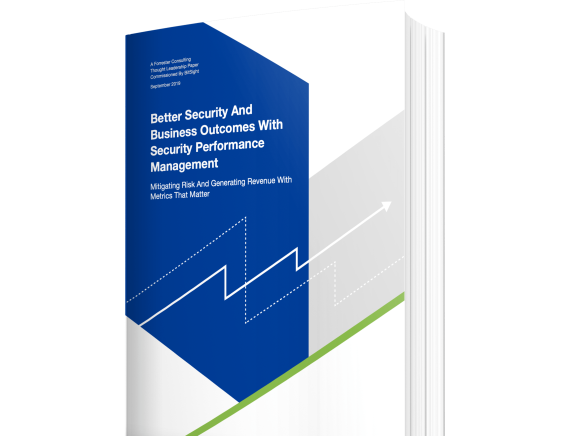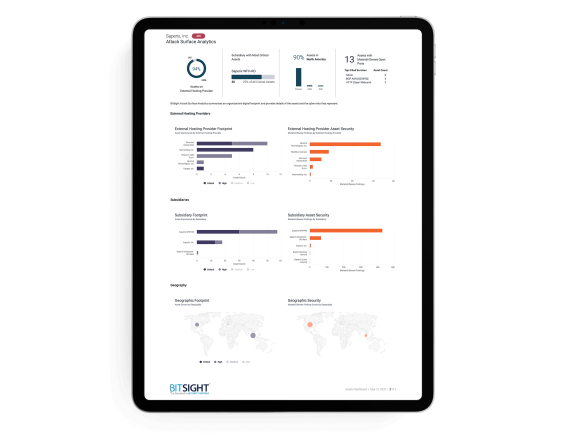Learn how to revolutionize the reporting process at every level of your organization.
What Does Risk-Based Cybersecurity Reporting Look Like?
Tags:

Effective communication between different members of your team can make all the difference when it comes to maintaining your desired security posture and preventing massive cyber incidents. Reports can play a critical role in these communications, serving as the central mechanism through which to align on the most significant issues and make more confident, data-driven decisions.
Read on to learn how to leverage risk-based cybersecurity reporting at every level of your organization — from providing actionable information in context to conveying results in a clear, easily understandable language that makes sense to the business.
What is risk-based cybersecurity reporting?
Risk-based reporting, as opposed to compliance-based or incident-based reporting, is the approach best suited to reducing an organization’s actual exposure to cyber threats. Following this type of approach can help individuals and teams at all levels of an organization — from practitioners to board members — focus on the most significant issues without falling victim to alert fatigue and ignored warnings.
When it comes to the report itself, a risk-based cybersecurity report delivers findings in context, helping the recipient understand what role a number plays in the overall risk landscape of the organization. This context may include anything from comparison to past performance to financial quantification of cyber risk to alignment to cybersecurity frameworks within your industry. Armed with these insights, security professionals at every level of your organization can make more informed, data-driven decisions around where to distribute limited budget and resources.

Risk-based reporting for board members
Board members have to manage a tough balancing act of being answerable to regulators and investors and ensuring their organization is maintaining an acceptable level of risk. Therefore, it’s critical that they understand the difference between cybersecurity as it pertains to compliance versus how it pertains to actual cyber risk. In addition, they need to focus on creating a culture of transparency, where no one is afraid to tell the truth about any cybersecurity issues the organization is facing.
Overall, it’s critical that they’re asking security leaders the right questions. These may include:
- What is the current state of cyber risk at the organization?
- What are the biggest gaps in our cybersecurity programs?
- What are you doing to close these gaps and mitigate cyber risk?
They can leverage continuous monitoring tools, like security ratings, to see at-a-glance whether the information coming up from their executives is reflecting the true, real-time state of cyber risk across the organization.
Risk-based reporting for executives
When reporting cybersecurity to the board, executives often have to tackle the difficult task of putting technical concepts into context for non-technical individuals. Taking a risk-based approach is critical here, because doing so empowers them to relate their findings back to cyber risk and the potential financial implications of that risk — in a language that makes sense to the business.
Security leaders can also deliver more compelling presentations by including a strategic component. This may involve laying out a roadmap of short-, medium-, and long-term goals for their organization’s security performance management program — and putting reported metrics into the context of those goals. Doing so empowers executives to prove the effectiveness of a particular solution over time.

Better Security And Business Outcomes With Security Performance Management
Forrester found that C-level leaders are struggling to understand how their security is performing and how to adequately report that performance to the board and other C-level leadership.
Risk-based reporting for managers
Now, more than ever, security managers are experiencing a disconnect between the resources they think their teams need and the budget they’ve been given to work with. Risk-based reporting can help to solve this issue and bridge the gap between how managers and their superiors understand their organization’s security posture.
For managers, much of the work of risk-based reporting comes down to choosing the most relevant performance indicators. They need to be able to relate the findings back to the larger context of company-wide goals, strategies, and KPIs.
One valuable strategy here could be to leverage dashboards for continuous reporting. Managers can develop a dashboard that executives can check whenever they’d like to get a quick picture of cybersecurity or risk — which will in turn empower superiors to make decisions that are more closely aligned with the security team.
Risk-based reporting for practitioners
Today’s practitioners are challenged to do the actual hands-on work of mitigating risk while making a constant series of difficult resource allocation decisions. And in our “new normal” operating environment, making these decisions is more difficult than ever. After all, many cybersecurity professionals are taking on new responsibilities, such as general IT support, while being challenged to work with decreasing budgets.
Through risk-based reporting, practitioners can demonstrate their effectiveness while helping their managers determine where their skills are most needed. One of the best methods here is forecasting — which empowers practitioners to model different scenarios and paths of remediation to identify the ultimate course of action and determine how to allocate limited resources.
Optimize the reporting process at every level
It’s clear that taking a risk-based approach to cybersecurity reporting can play a vital role in your ability to present metrics in context for maximum impact.
Interested in learning more about the techniques, software, and methodologies that are revolutionizing the reporting process at every level of the organization? Check out our ebook, A Practical Guide to Risk-Based Cybersecurity Reporting.

Get A Free Attack Surface Report
Request your free custom report and see how you can start reducing your cyber risk exposure across your digital ecosystem: cloud assets across all geos & subsidiaries; discover shadow IT; security risk findings; and more!


